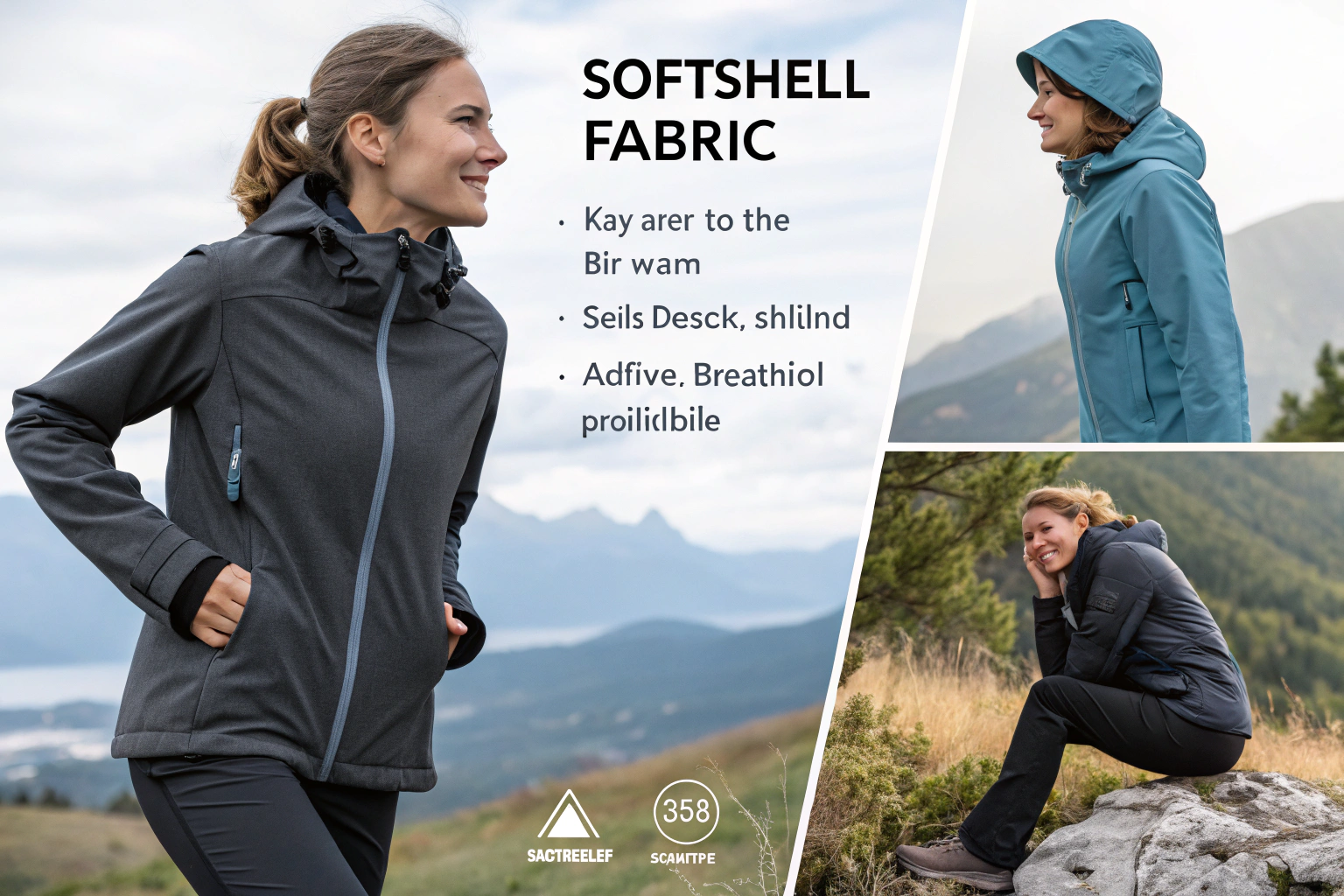Have you ever struggled to find the perfect fabric that keeps you warm, blocks the wind, and still lets your skin breathe during an outdoor adventure? Many of our clients, especially those in the sportswear and outerwear sectors, face this exact challenge. They need a material that performs well in various conditions without needing multiple layers. This is where the magic of softshell fabric comes into play. As a fabric expert with over two decades in the textile industry, I see softshell as a revolutionary solution to this common problem.
Softshell fabric is a versatile, multi-functional material primarily used for outdoor and athletic clothing. It is engineered to provide a unique combination of insulation, wind resistance, water repellency, and breathability in a single layer. Think of it as a hybrid that combines the warmth of a fleece with the protective shell of a jacket. Its main applications include jackets, pants, vests, and accessories designed for activities like hiking, skiing, running, and other sports where weather conditions can change quickly. At our company, we specialize in producing high-performance softshell fabrics that meet the demanding needs of global brands.
Understanding the specifics of softshell fabric can help you make better sourcing decisions for your clothing line. This article will break down everything you need to know. We will explore its key characteristics, the best raw materials for its production, its diverse applications across different industries, and how it compares to other popular outdoor fabrics. By the end, you will have a clear idea of why softshell is a top choice for performance wear and how we can help you develop the perfect fabric for your market.
What are the key characteristics of softshell fabric?
When you're sourcing fabrics for performance wear, knowing the core features is crucial. Softshell fabric stands out because of its unique blend of properties. It is designed to be a comfortable, all-in-one solution for active use in cool and windy conditions. Many buyers ask us what makes softshell so special compared to a simple fleece or a hard shell. The answer lies in its engineered balance.
The key characteristics of softshell fabric are its exceptional breathability, wind resistance, water repellency, stretchability, and durable insulation. Unlike a waterproof hardshell, softshell prioritizes air permeability to allow sweat vapor to escape, preventing that clammy feeling. At the same time, it blocks chilling winds and can withstand light rain or snow thanks to a Durable Water Repellent (DWR) finish. The inclusion of spandex or other elastic fibers gives it a comfortable four-way stretch, essential for freedom of movement. Our CNAS-accredited lab rigorously tests all these properties to ensure they meet international standards for brands like yours.
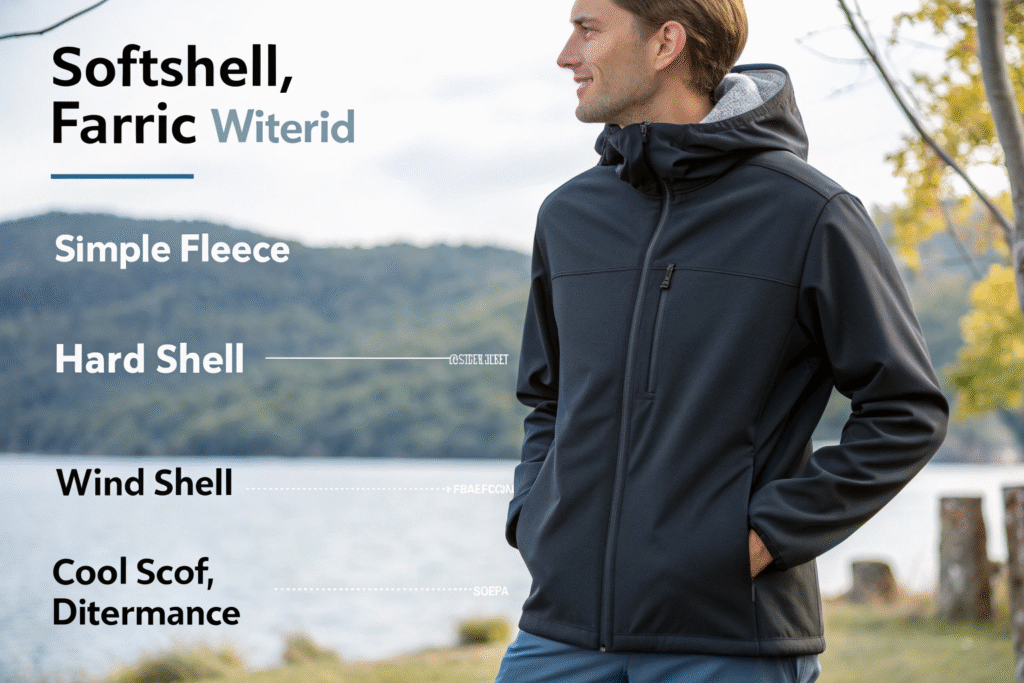
How does breathability work in softshell fabric?
Breathability is the fabric's ability to allow moisture vapor from sweat to pass through it. This is vital for comfort during high-exertion activities. If moisture gets trapped inside, the wearer can feel wet and cold. Softshell fabrics achieve breathability through their specific weave or knit construction and sometimes with the help of a microporous membrane laminated between the outer and inner layers. The tightness of the weave controls the airflow – it's tight enough to block wind but loose enough to let vapor out. We use advanced moisture-wicking treatments to enhance this natural property, ensuring the fabric pulls sweat away from the skin to the outer surface where it can evaporate. This technology is a key reason why softshell is a top choice for athletic apparel brands focused on user comfort.
Why is wind resistance so important?
Wind resistance prevents the wind from penetrating the fabric and robbing the body of its warmth, a phenomenon known as wind chill. Softshell fabric provides an effective barrier against wind. This is achieved through a densely woven or knitted outer face. In some high-end softshells, a special windproof membrane is added for maximum protection. This feature means that the wearer can stay warm without needing an extra, bulky layer, making the garment more versatile and comfortable. For our clients producing jackets for alpine sports or running in cold climates, this wind resistance is a non-negotiable feature. We ensure every batch of our softshell fabric passes strict wind resistance tests in our quality control center, giving you the confidence that your products will perform as promised.
Which materials are best for producing softshell fabric?
The performance of softshell fabric is directly linked to the raw materials used. Choosing the right fibers is the first step in creating a fabric that meets specific functional demands. At our weaving factory in Keqiao, we have experimented with countless blends to perfect our softshell recipes. The goal is always to balance durability, function, comfort, and cost-effectiveness for your production.
The best materials for softshell fabric are polyester and nylon, often blended with a percentage of spandex (elastane). Polyester is favored for its strength, quick-drying properties, and excellent moisture-wicking capabilities. Nylon adds exceptional abrasion resistance and durability, making it ideal for garments that will see rough use. A spandex content of around 5-15% is standard to provide the necessary stretch and recovery. For the inner layer, a soft, brushed fleece made from polyester is common to enhance warmth and comfort. We also offer eco-friendly innovations like softshell made from recycled polyester (rPET), which performs equally well while meeting the growing demand for sustainable materials from European and North American markets.
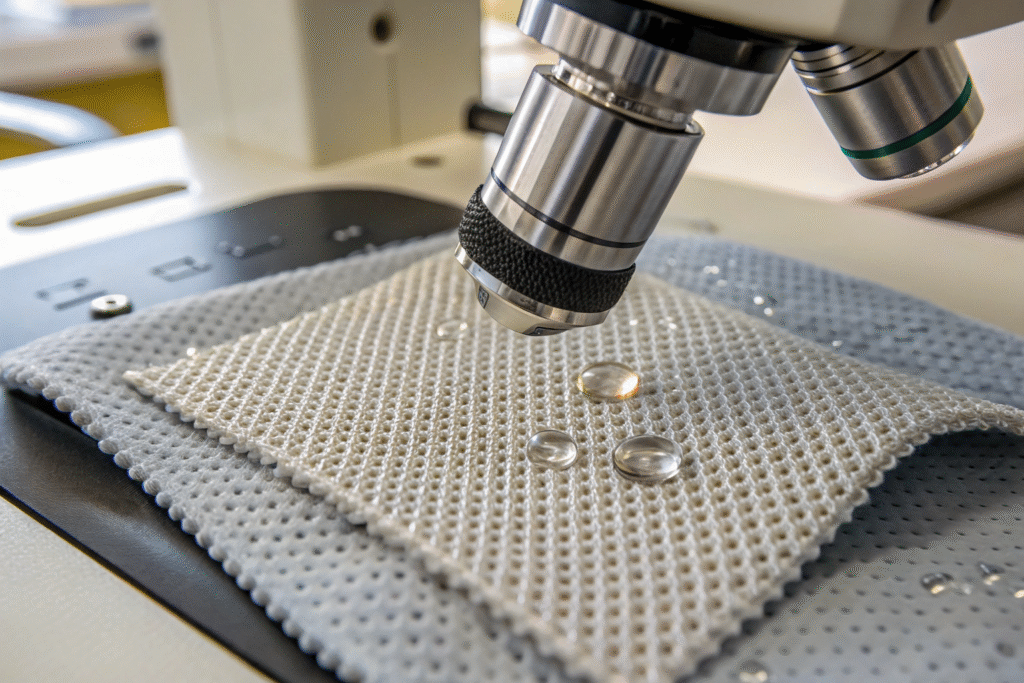
What is the role of polyester in softshell?
Polyester is the workhorse of softshell fabric. Its hydrophobic nature means it does not absorb water, allowing it to dry quickly and transport moisture effectively. This makes it the perfect base fiber for managing perspiration during physical activity. Polyester is also very strong and resistant to shrinking and stretching, ensuring the garment maintains its shape over time. Furthermore, it takes well to dyeing, resulting in vibrant, colorfast fabrics. In our production, we use both virgin and recycled polyester grades to cater to different market segments and price points. Our rPET softshell fabrics are particularly popular with brands that have strong corporate sustainability commitments, as they help reduce plastic waste without compromising on performance.
Why is a spandex blend crucial for performance?
Spandex, also known as elastane or Lycra, is the component that gives softshell fabric its essential stretch. This is not just a comfort feature; it is a performance necessity. Stretch allows for unrestricted movement, which is critical for activities like climbing, skiing, or any sport that requires a wide range of motion. A typical softshell blend might be 88% polyester / 12% spandex. This small percentage makes a huge difference in the fabric's functionality. Without spandex, the fabric would be rigid and restrictive. Our agile R&D team has expertise in optimizing spandex blends to achieve the right balance of stretch, recovery (the ability to return to its original shape), and durability, ensuring your garments move with the wearer and last longer.
Where is softshell fabric most commonly used?
The application of softshell fabric is vast, but it has found its true home in sectors where performance and comfort are paramount. Its versatility makes it a favorite among designers and product developers for creating garments that cater to an active lifestyle. From our experience supplying global brands, we see consistent demand from a few key areas.
Softshell fabric is most commonly used in outdoor and athletic apparel. This includes jackets, pants, and vests for hiking, mountaineering, skiing, snowboarding, cycling, and running. Beyond these, it is also widely used in tactical and workwear uniforms for law enforcement, security, and construction, where durability and weather protection are needed. A growing trend is the use of softer, more fashion-oriented softshells in urban outerwear and athleisure wear, blending technical performance with everyday style. Our diverse product portfolio includes various weights and finishes of softshell to serve all these markets, from heavy-duty technical fabrics for professional use to lighter, more stylish versions for casual wear.
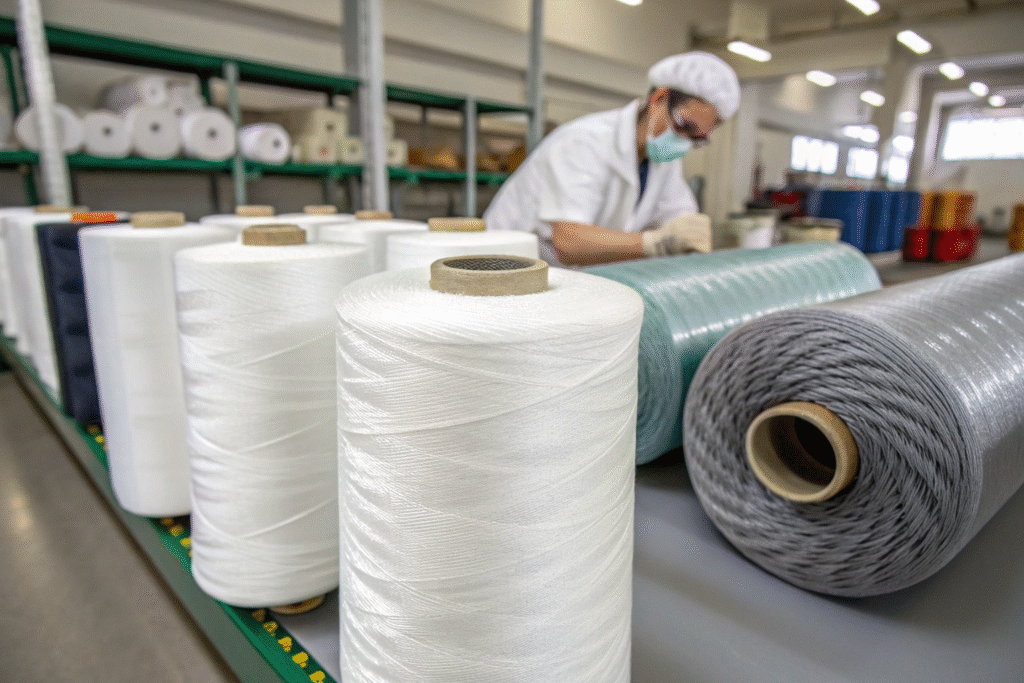
How is softshell fabric applied in outdoor clothing?
In outdoor clothing, softshell fabric is typically used as a mid-layer or an outer layer, depending on the weather conditions. For example, a softshell jacket is perfect for high-output activities in cold, dry, or windy weather. It provides enough insulation and wind protection while allowing the body to breathe heavily. Brands often use it for hiking pants because of its stretch and abrasion resistance, which is ideal for scrambling over rocks. We work closely with our clients to develop the right softshell for their specific application, adjusting the weight, thickness, and finish. Our full-category fabric service means we can handle everything from the yarn sourcing to the final DWR coating, ensuring a perfect fit for the demanding outdoor market.
What about its use in athleisure and urban wear?
The line between performance wear and everyday fashion has blurred, and softshell fabric is a key player in this trend. Its clean, modern look, comfortable stretch, and functional benefits like wind resistance make it ideal for athleisure and urban outerwear. Think of stylish bomber jackets, tailored pants, or sleek vests that you can wear from a casual office to a weekend bike ride. The fabric offers a technical aesthetic that appeals to modern consumers. For this market, we focus on developing softshells with a softer hand feel, a wider range of fashionable colors, and prints. Our fast development cycle allows us to quickly produce samples based on the latest trend forecasts, helping fashion brands stay ahead of the curve with innovative functional textiles that look as good as they perform.
How does softshell compare to hardshell and fleece fabrics?
Choosing the right fabric for a garment line often involves comparing options. Softshell, hardshell, and fleece are all staples of outdoor apparel, but they serve different purposes. Understanding their differences will help you, as a buyer, select the best material for your product's intended use and price point. Let's break down this common comparison.
Softshell fabric is a balanced hybrid, offering a mix of weather protection, breathability, and warmth in one layer. Hardshell fabric, in contrast, is primarily designed for maximum waterproofing and wind protection in severe weather, but it usually lacks insulation and has lower breathability. Fleece is primarily focused on warmth and breathability but offers little to no protection against wind or rain. The following table provides a clear comparison:
| Feature | Softshell | Hardshell | Fleece |
|---|---|---|---|
| Water Resistance | Water-repellent (good for light rain) | Waterproof (good for heavy rain) | None |
| Breathability | High | Moderate to Low | Very High |
| Wind Resistance | High | Very High | Low |
| Insulation | Good (built-in) | None (requires a separate layer) | Excellent |
| Best Use Case | Active use in cool, windy conditions | Heavy rain/snow, static conditions | Mid-layer for warmth in dry conditions |
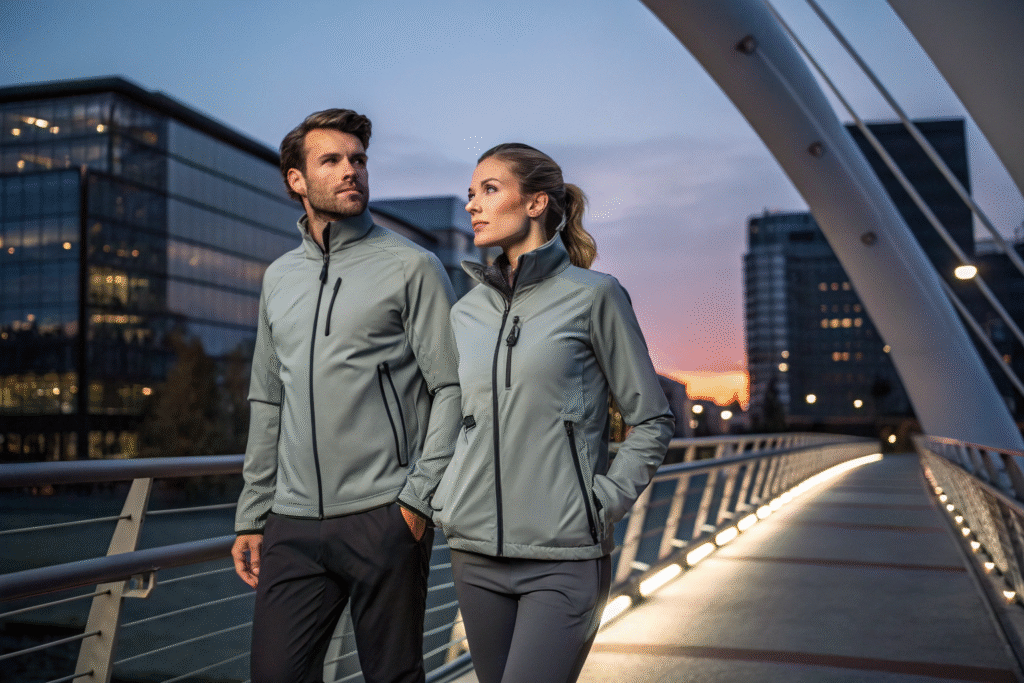
When should you choose softshell over a hardshell?
You should choose softshell over a hardshell when the primary need is for breathability and comfort during high-energy activities in cool and windy conditions, with only a chance of light precipitation. Hardshells can feel clammy during intense exercise because they trap sweat vapor inside. Softshell's superior breathability manages moisture better, keeping the wearer more comfortable. A hardshell is necessary when guaranteed, full waterproofing is needed for prolonged exposure to rain or wet snow. For many of our clients, the solution is a system: a softshell jacket for most days, paired with a packable hardshell that can be layered on top if the weather turns nasty. Our end-to-end quality control ensures that both our softshell and hardshell fabrics meet the highest international standards, so you can build reliable garment systems.
What are the advantages of softshell compared to fleece?
The main advantage of softshell over fleece is its wind resistance. A fleece jacket is incredibly warm and breathable, but as soon as the wind blows, the cold air passes right through it, making it ineffective as an outer layer. A softshell jacket provides similar warmth but adds a crucial wind-blocking layer. This means it can often be worn alone where a fleece would require an additional shell jacket. Softshell also typically has a more durable outer face that is resistant to abrasion, while fleece can be prone to pilling. However, fleece remains an excellent, cost-effective mid-layer for insulation underneath a softshell or hardshell when temperatures drop significantly. We help our customers navigate these choices by providing detailed specifications and sample development within 48 hours, allowing you to feel and test the fabrics firsthand before making a bulk order decision.
Conclusion
Softshell fabric is a remarkably versatile and intelligent material that solves the core problem of balancing protection and comfort for active individuals. Its unique combination of wind resistance, water repellency, breathability, and stretch makes it an indispensable choice for a wide range of applications, from professional outdoor gear to fashionable urban wear. Understanding its characteristics, material composition, and how it compares to other fabrics empowers you to make informed and strategic sourcing decisions for your brand.
At Fumao Textiles International, we are more than just a supplier; we are your partner in fabric innovation. With over 20 years of experience and a fully integrated supply chain from weaving to finishing, we are equipped to produce high-quality softshell fabric tailored to your exact specifications. Whether you need a durable fabric for mountain sports, a sustainable option made from recycled materials, or a stylish version for the athleisure market, we have the expertise and agility to deliver.
If you are ready to develop your own high-performance clothing line with reliable softshell fabric, we would be happy to discuss your project. For a personal consultation and to see our full range of samples, please contact our Business Director, Elaine, at elaine@fumaoclothing.com. Let's co-create value for your brand.

